June 2023





VOTE IN ISA'S UPCOMING ELECTION
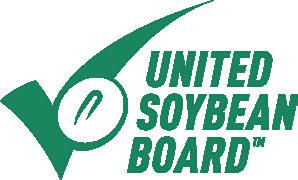



2 | JUNE 2023 | IASOYBEANS.COM !"#$%#& !'(()(* !&'+$(, !*-*$." !&&(/'0 !/,$)+& !(,)-+, !0%)%&1 !"".#+) !0$0#)% !"""%*, !'$$,.. !+#..(' !"*%,&& !"$"$", !/././. !+#+#+# !$1$,$, !-*-*-* !&''$&% !'%'*'% !&''('1 !'.(((( !,)(.&, !'2'(&. 1 2 3 4 5 6 7 8 9 10 11 12 13 14 15 16 17 18 19 201 21 22 23 24 25 On World Food Day and every day, WISHH’S strategic partners take local action. WISHH is a program of the American Soybean Association and is funded in part by the United Soybean Board and state soybean board checkoff programs. Connect with WISHH www.wishh.org
Executive Committee
President
Randy Miller, Lacona | D8
President-Elect
Suzanne Shirbroun, Farmersburg | D3
Secretary
Jeff Frank, Auburn | D4
Treasurer
Brent Swart, Spencer | D1
At-Large Director
Tom Adam, Harper | D9
Board of Directors
Chuck White, Spencer | D1
April Hemmes, Hampton | D2
Casey Schlichting, Clear Lake | D2
Rick Juchems, Plainfield | D3
Marty Danzer, Carroll | D4
Morey Hill, Madrid | D5
Dave Struthers, Collins | D5
Robb Ewoldt, Davenport | D6
Dave Walton, Wilton | D6
Scot Bailey, Anita | D7
Lee Brooke, Clarinda | D7
Warren Bachman, Osceola | D8
Pat Swanson, Ottumwa | D9
Tim Bardole, Rippey | At Large
Steph Essick, Dickens | At Large
Lindsay Greiner, Keota | At Large
Brent Renner, Klemme | At Large
American Soybean Association
Board of Directors
Steph Essick, Dickens
Wayne Fredericks, Osage
Morey Hill, Madrid
Jeff Jorgenson, Sidney
Pat Swanson, Ottumwa
Dave Walton, Wilton
United Soybean Board of Directors
Tim Bardole, Rippey
Robb Ewoldt, Davenport
Lindsay Greiner, Keota
April Hemmes, Hampton
Brent Renner, Klemme
Staff Credits
Editor | Bethany Baratta
CO of Strategy & Brand Management | Aaron Putze, APR
Photographer | Joclyn Bushman
Communications Specialist | Joseph Hopper
Creative Design Coordinator | Susan Langman
Writer | Jeff Hutton
Writer | Kriss Nelson
Public Relations Manager | Brock Johnston
Iowa Soybean Review is published monthly by: Iowa Soybean Association
1255 SW Prairie Trail Parkway, Ankeny, Iowa 50023 (515) 251-8640 | iasoybeans.com
E-mail: bbaratta@iasoybeans.com
For advertising information contact Bethany Baratta at (515) 334-1020 or bbaratta@iasoybeans.com.

Comments and statewide news articles should be sent to the above address. Advertising space reservations must be made two months preceding publication. In consideration of the acceptance of the advertisement, the agency and the advertiser must, in respect of the contents of the advertisement, indemnify and save the publisher harmless against any expense arising from claims or actions against the publisher because of the publication of the content of the advertisement.
Stepping Up Our Game
ISA Research Center for Farming
Innovation Sr. Director of Research
Christie Wiebbecke shares a reimagined approach to research.
Inflation Spikes and Currency Devaluation
Curb Soy Sales
A recent learning mission provided insights on Morocco’s market.
Director Election
Meet the candidates vying for positions on ISA’s board of directors.
Taking the Long View
Meet a soybean farmer incorporating organics and cover crops into his operation.
IOWA SOYBEAN REVIEW® | 3 JUNE 2023 | Vol. 35, No. 9
the Cover: ISA Farmer Member Mark Dobson is sharing his love for conservation and farming to his son Oliver. See his story on Page 26.
On
9
10
14
Your Guide to ISA's
26
Executive Insights
Kirk Leeds, ISA Chief Executive Officer kleeds@iasoybeans.com


Pounding the Pavement
Nearly every conversation about the market and profit potential of growing soybeans includes two questions: “What if China significantly decreases its purchases of U.S. soy?” and “What are we going to do with all the soybean meal as crush expands for the renewable diesel market?”
Time spent in Egypt and Morocco helps provide answers.
In March, an Iowa Soybean Association (ISA) trade mission led by President Randy Miller and President-Elect Suzanne Shirbroun included stops in Cairo, Marrakech and Casablanca. We conversed with farmers, farm association reps, feed manufacturers, University of Cairo ag faculty and business leaders. We also toured aquaculture facilities, feed mills and poultry, fish and dairy demonstration farms.
Egypt and Morocco, with a combined population of nearly 150 million, are important destinations for U.S. soy (we currently enjoy more than an 80% market share in both countries). Urbanization is occurring at a fast pace, creating additional demand for dairy, chicken, eggs, turkey and fish. The populations of both countries
trend younger, with a desire to eat healthier and more conveniently. Aquafeed mills are adding capacity, with an eye on exporting the product throughout Africa as farm-raised fish and shrimp production intensifies. These trends bode well for Iowa soybean farmers. Soybean meal is an essential ingredient for commercial feed. As U.S. crush increases to produce oil for renewable diesel and sustainable aviation fuel, more soybean meal must be exported. Countries like Egypt and Morocco are ideal options as both prefer U.S. soy because of its quality and reliable availability.
Expanding our portfolio of trading partners and volumes also reduces our reliance on China. While China’s appetite for soy will always lead the world, moving product elsewhere is beneficial to the interests of U.S. soybean farmers, especially as tensions escalate between the world’s two leading economies.
While Egypt and Morocco are struggling economically, our presence there matters. We must continue reassuring them that U.S. soybean farmers are committed to being their supplier of choice and,
in countries like Egypt, training farmers on how using soy enhances feed efficiencies and sustainability.
On a personal note, I traveled to Egypt and Morocco with preconceived notions about their people and the Islamic faith. My knowledge and understanding grew infinitely during the two-week trade visit. I learned about the importance of family and religion to their identity and daily living. We saw firsthand the economic hardships caused by the strength of the U.S. dollar (and subsequent devaluation of the Egyptian pound) and the loss of corn and wheat imports due to Russia’s war with Ukraine. And we were reminded of their desire for peace, modernizing their farms and food systems, and improving their standard of living.
Pounding the pavement and maintaining a long view of potential markets for U.S. soy are strengths of the soybean checkoff. The hard work will continue to enhance the competitiveness of Iowa soybean farmers and improve the lives of people of Egypt, Morocco and beyond.
4 | JUNE 2023 | IASOYBEANS.COM








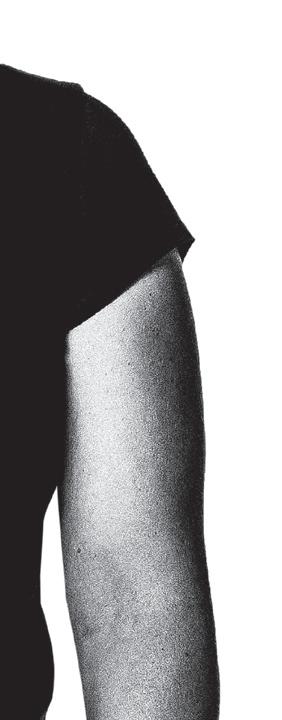




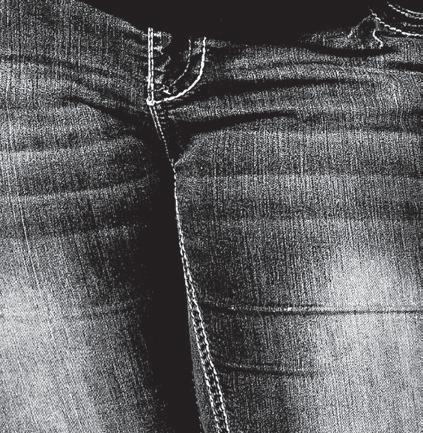
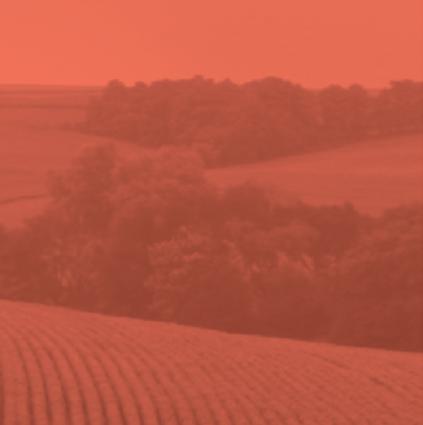
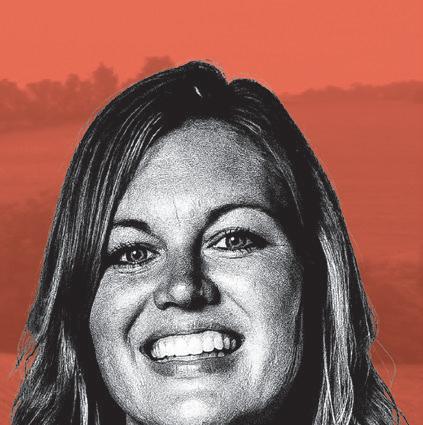

IOWA SOYBEAN REVIEW® | 5 Kelli T. / customer since 2001 Terms apply. See website for details. Customer-owned, mission-driven, a valued financial partner. We deliver the financial strength to help you grow, the competitive rates to give you an edge, and cashback dividends that deliver something more. Discover a lender with the expertise, products, and services you’ll find nowhere else. Learn more at 800-884-FARM. Agriculture Works Here.® FCSAmerica.com DISCOVER THE BENEFITS OF A LENDER THAT WORKS FOR YOU.
INVESTING IN NEW MARKETS FOR U.S. SOY

From promoting the profitability of using high-quality soybean meal in India to training animal producers on nutrition in Colombia, the soy checkoff is working behind the scenes to develop more market opportunities for U.S. soy. We’re looking inside the bean, beyond the bushel and around the world to keep preference for U.S. soy strong. And it’s helping make a valuable impact for soybean farmers like you.
See more ways the soy checkoff is maximizing profit opportunities for soybean farmers at unitedsoybean.org
united
Brought to you by the soy checkoff. ©2018 United Soybean Board. Our Soy Checkoff and the Our Soy Checkoff mark are trademarks of United Soybean Board. All other trademarks are property of their respective owners.
soybean.org
Editor’s Note by Bethany
 Baratta bbaratta@iasoybeans.com
Baratta bbaratta@iasoybeans.com
The Value of Direction
Nearly 1,000 miles away from Iowa, I sat in a brownstone home in Washington, D.C., two floors from street level, pondering my next adventure. Having landed a communications internship with the National Pork Producers Council, I had three months to make the most of my experience — personally and professionally.
To the west of my temporary D.C. home: A church once frequented by Robert Kennedy. Farther west on Constitution Avenue, the U.S. Capitol. I walked past these landmarks (and more) each day en route to work.
It was surreal living in the nation’s capital. Coming from a town of 1,000 people, the monuments seemed to stand taller than they probably appeared to others. And the views never got old.
My time in D.C. was before smartphones — or, at least before I owned a smartphone. Nights were filled with dinners with roommates — all who were randomly assigned based on internship location by a student housing program — plotting our weekend sightseeing adventures. There were cathedrals to visit, Smithsonian museums to peruse and souvenirs to be purchased. There were post-work wing specials and even the filming of a “Transformers” movie to witness.
But in an unfamiliar territory, I needed solid directions. I had stacks of maps. One for the metro, one for the city. Then I overlayed online turnby-turn directions (á la MapQuest) and bus routes to determine the most efficient way to reach my destination. More than a decade after my time in D.C., I still rely on good directions. Iowa’s soybean industry relies on solid direction from its farmer-leaders, those elected to its board of directors.
I admire the path Iowa Soybean Association directors establish — personally and professionally — too. Writing the biographies for the 17 candidates for various open seats in this year’s election, I saw a wide range of farming and life experiences. Those diverse experiences help pave the path for fellow soybean farmers and the industry.
If you annually market 250 bushels of soybeans, you can expect a voting guide and additional voting instructions in the mail soon. Think about how these candidates can help move the industry forward. Your voice (and vote!) matters in your farm journey, and I hope you’ll take the opportunity to vote and connect with directors. Together, I know we can continue to find the right route to success.
Enjoy the journey,

Rural Route 2
IOWA SOYBEAN REVIEW® | 7
Make Moves with U.S. Soy



WISHH connects Trade, Development & Food Security in Cambodia where fish account for 61% of households' animal protein intake. We cultivate trade with Cambodian feed mills that are buying U.S. soybean meal for the growing aquaculture industry that WISHH is developing. Our trade and development work makes protein more available in the country where 45% of Cambodians live in moderate or severe food insecurity.


Find out how WISHH’s three pillars of trade, development and food security cultivate new markets for U.S. Soy protein.
 Trade. Development. Food Security.
Trade. Development. Food Security.
RCFI Update
Christie Wiebbecke, ISA Sr. Director of Research

cwiebbecke@iasoybeans.com
Stepping up our Game
When I stepped into my role as the senior director of research at the Iowa Soybean Association (ISA) in January, I had two things on my mind: Getting to know the Research Center for Farmint Innovation (RCFI) team and learning how our mission meets the needs of the farmers we serve. I was suited up and ready to step on the field.
With an updated roster due to staff changes within the past six months, it was time for a new game plan to carry us into the next season.
ISA RCFI Director of Conservation Roger Wolf, RCFI Director of Research Joe McClure and I rolled out a redesigned structure to deliver more efficient and effective onfarm research and environmental programming to serve Iowa farmers.
The research leadership team, with support of ISA CEO Kirk Leeds and my predecessor, Ed Anderson, intentionally redesigned RCFI to deliver on our mission. Our goal is to provide robust agronomic and environmentally sound on-farm research programming supporting Iowa soybean farmers to enhance productivity, profitability, and sustainability.
So, what does this mean for you? In a nutshell, we simplified our structure to improve operational
efficiency and effectiveness. It means freeing up the RCFI team to support research projects, discover technical insights and leverage those lessons to provide technical expertise on the farm. It means quickly identifying collaborators internally and externally. Our organizational structure is designed to support the constant loop from question to on-farm implementation.
In RCFI, we have two main houses of work: research and conservation. Research is designing experiments to generate data and insights to enhance productivity, profitability and sustainability. As we listen to farmers, industry experts and public researchers we formulate questions. In RCFI reimagined, our research agronomists collaborate with their peers to gain perspective on data and insights, conservation programming, and conservation agronomy to build robust trials. Conservation includes technical education and outreach to drive implementation in supporting Iowa farmers. It may seem, at times, counterintuitive to think that conservation practices can drive enhanced productivity and profitability. In previous roles, I thought primarily about yield, yield and more yield, with a few other
complexities. Here, we have a unique opportunity to intentionally design research projects to generate data and insights. This will help develop technical outreach materials to enhance our understanding in how to make conservation practices drive productivity and profitability, the trifecta of our mission.
It is an exciting time to be a part of ISA RCFI. We’re getting back on the field after a huddle, energized and ready to serve Iowa farmers. We are driven to deliver our mission to champion holistic research programming reflecting Iowa soybean farmers’ top priorities through on-farm research, education and outreach, and technical assistance. Scan the QR code below to check out ISA’s updated research webpage and meet the staff who make up our awesome RCFI team.

Wishing you all a safe, productive, and profitable season.
2-0-2-3, Driven to Deliver, Break!

IOWA SOYBEAN REVIEW® | 9
Scan with your phone's camera.
Inflation Spikes, Global Currency Devaluations Curb U.S. Soybean Sales
It’s often said that when the U.S. economy sneezes, the rest of the world catches a cold.
Now, it comes with the flu, too.
“What happens economically in the U.S. doesn’t stay in the U.S.,” says Iowa Soybean Association (ISA) President Randy Miller. “Fiscal policies and elections have an impact, especially for people in developing countries.”
Miller’s observation comes after traveling to Morocco and Egypt on an ISA-led trade mission. The farmer from Lacona and ISA President-Elect Suzanne Shirbroun from Farmersburg conversed with Egyptian and Moroccan feed millers, farmers and farm advocates during a two-week visit in March.

The goal: To increase the price paid to Iowa farmers for the soybeans they grow by boosting preference and demand for the oilseed among developing countries.
“Egypt and Morocco are becoming more urbanized, and they want to eat more protein,” Miller says. “That bodes well for more soybean demand.”
But being a reliable supplier of soy isn’t enough. It must be competitively priced, too.
“The state of financial affairs, both in the U.S. and globally, is on everyone’s mind,” adds Shirbroun.
“It’s the start of every conversation and answer to every question.”
Hard hit

The Egyptian people have been walloped by the rising value of the U.S. dollar. Interest rate hikes by the U.S. Federal Reserve have depressed the buying power of the Egyptian pound.
Case in point: It takes almost twice the number of Egyptian pounds to purchase each U.S. dollar of agricultural products than it did just one year ago.
Representatives from U.S. Soybean Export Council and Skretting Feed greet ISA President Randy MIller, President-Elect Suzanne Shirbroun, CEO Kirk Leeds and Chief Officer of Strategy & Brand Management Aaron Putze for a tour of Skretting Feed near Cairo.
PHOTOS AND ARTICLE BY AARON PUTZE, APR
Put another way, Egyptian buyers must pay nearly twice the amount for a metric ton of U.S. soybean meal. In turn, the cost of producing eggs, milk, fish and poultry is accelerated for a key U.S. trading partner. The higher costs are passed along to Egyptian consumers already struggling with soaring cost-ofliving expenses, including energy.
“What was a difficult situation has become a dire one for people living on the edge,” Miller says. “It’s heartbreaking because you know the important role soy plays, yet there aren’t any easy levers to pull to improve the situation.”
Skretting, a feed miller located about a 90-minute drive outside of downtown Cairo, knows all too well the headwinds created by soaring U.S. interest rates and the Egyptian pound’s plummeting value.
“The first question you get asked when visiting with soybean buyers in Egypt is where are interest rates going?” says Shirbroun. “The cost of everything is top of mind as companies seek to source raw commodities for feed.”
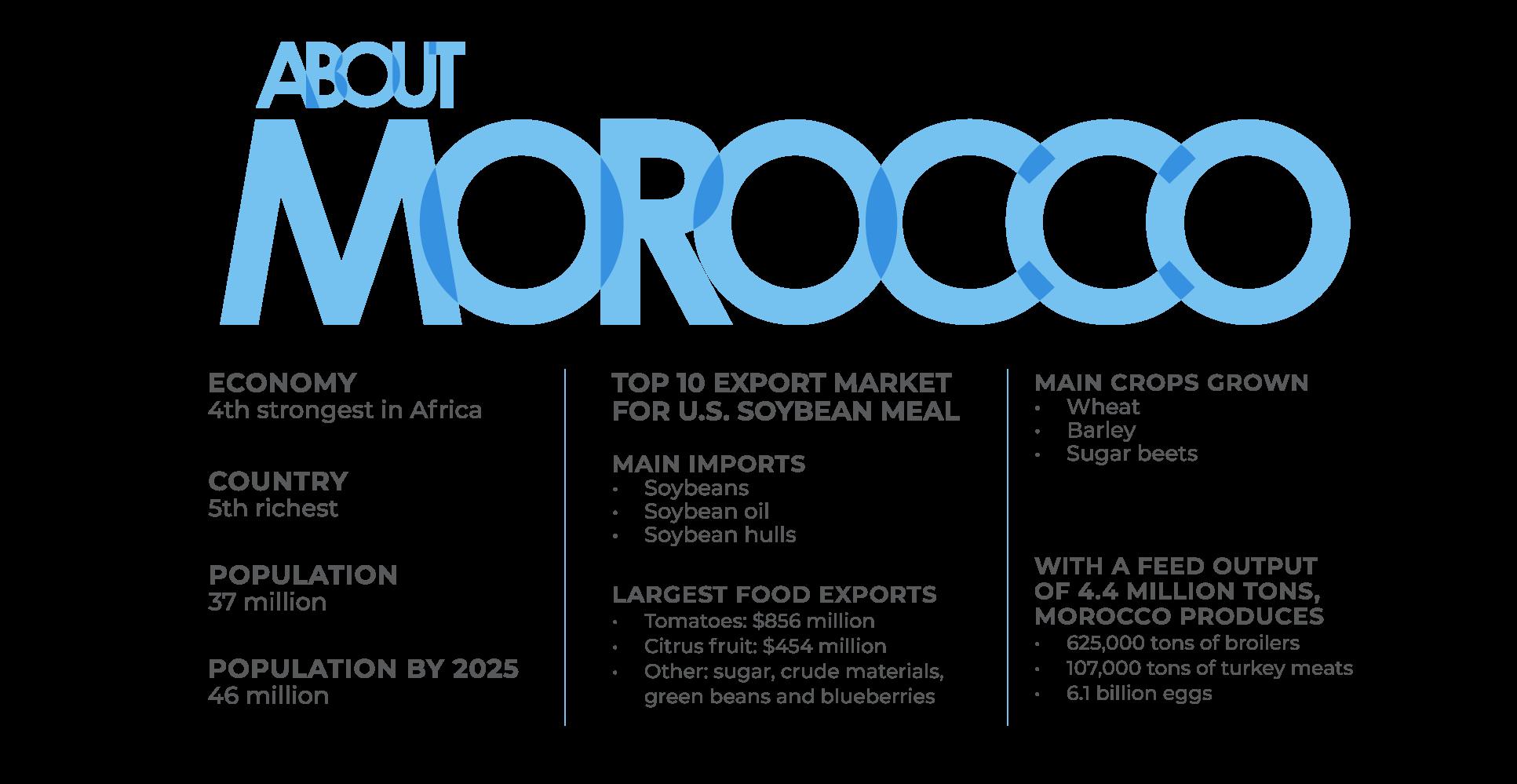
Dutch-based Nutreco Co., of which Skretting is a subsidiary, is a top-five global producer of feed, vitamins, mixes and additives. The family company was founded in 1896 and specializes in health, nutrition and food production. It’s the world’s top producer of aquafeed, with a workforce of more than 55,000.
Shirbroun says increased population, changing
diets, growing urbanization and a rising middle class are top-of-mind for companies like Skretting. The combination generates an insatiable appetite for U.S. soybean meal.
Skretting operates in 18 countries, producing 3 million tons of fish and shrimp feed annually. It also operates aquafeed research and validation stations in nine countries. Its Egypt facility accounts for 1.6 million tons of aquafeed annually. In 2008, the company added aquafeed to its line of animal feed. Production and feed efficiencies have improved dramatically.
Raw materials like soy are an essential slice of its production pie, says Dr. Alaa Badr, production manager for Skretting’s Egyptian production facility.
“We must create the right formulations for best feed conversions depending on the species type,” says Badr. “There’s no ambiguity about the goal. U.S. soy is a big part of achieving it.”
Better feed

Soy, he says, is an essential ingredient in making better feed. And better feed means a better product for consumers.
But the sudden and rapid escalation in U.S. soy prices is causing buyers like Skretting to search for less expensive ingredients, like barley. The result: a downturn in soybean sales to Egypt.
Continued on Page 12



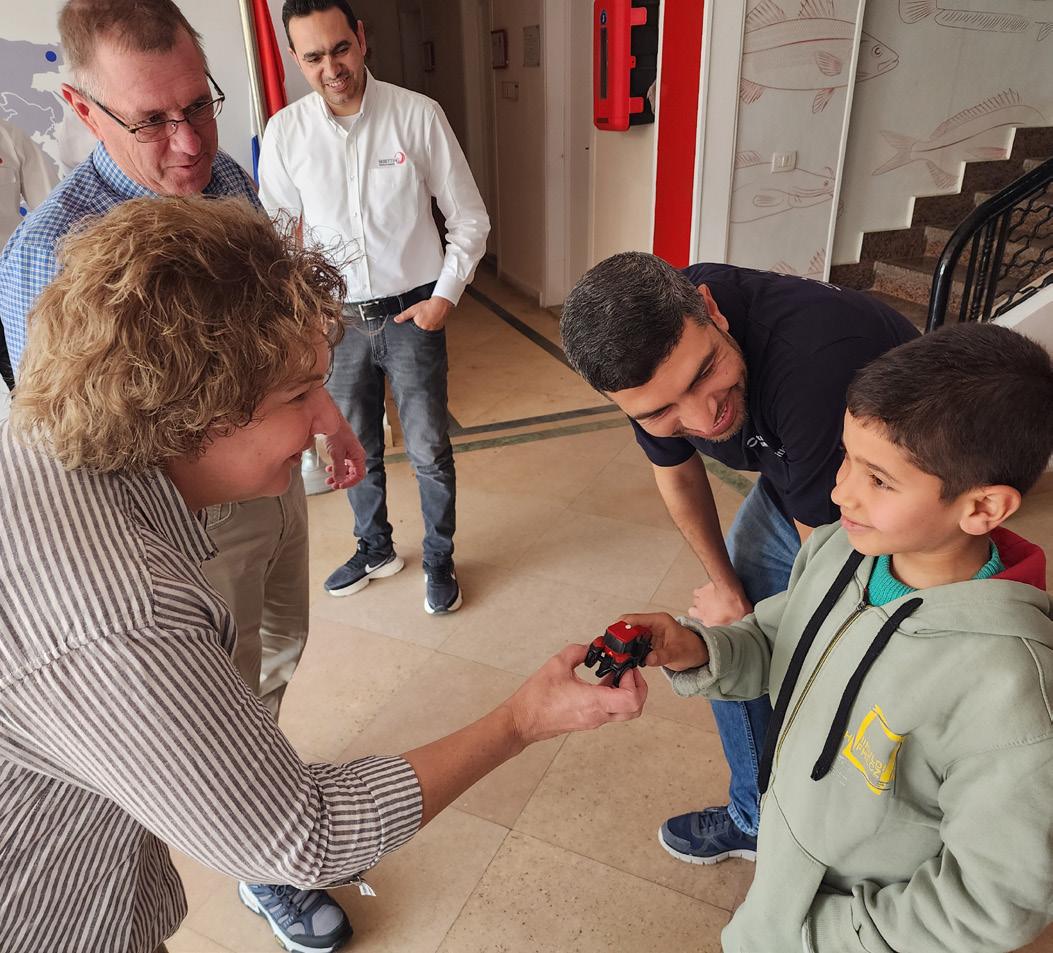

 Top left: Poultry feed samples from Eddik Feed in Morocco.
Top right: Processed soybeans for fish feed at Skretting Feed.
Right: Randy Miller (on right) chats with Eddik Feed Technical Director Yassir Aruri during a walking tour of the facility located on the outskirts of Berrechid, Morocco.
Bottom right: Suzanne Shirbroun shares a toy tractor while visiting Skretting Feed.
Top left: Poultry feed samples from Eddik Feed in Morocco.
Top right: Processed soybeans for fish feed at Skretting Feed.
Right: Randy Miller (on right) chats with Eddik Feed Technical Director Yassir Aruri during a walking tour of the facility located on the outskirts of Berrechid, Morocco.
Bottom right: Suzanne Shirbroun shares a toy tractor while visiting Skretting Feed.
12 | JUNE 2023 | IASOYBEANS.COM
Bottom left: Bagged feed containing U.S. soy ready for delivery at Eddik Feed.
Three years ago, Egypt sourced 4.2 million metric tons of U.S. soy. Thus far this marketing year, sales are off by more than 80%.
“We want to buy U.S. soy, but it’s too expensive now,” says Badr. “At these prices, the supply chain is broken.”
Everyone, he adds, is impacted when the cost of feed ingredients soars, from U.S. and Egyptian farmers to Egyptian feed manufacturers, food processors and consumers.
Russia’s continued war with Ukraine doesn’t help, as it drives up the price of corn and wheat.
“It’s like someone stole your wallet,” Badr says. “Everyone is suffering.”
While the Moroccan economy is more stable than its neighbor to the east, the country still faces its share of financial headwinds. Home to 38 million people, Morocco’s unemployment rate stands at 11%, while inflation has soared to 8.3% (up from 1.3% in 2022).
Eddik Feed, located 25 miles south of Casablanca near Berrechid, supplies the poultry, dairy and broiler industries. Before COVID-19’s arrival in 2020, annual poultry and egg consumption were increasing by 6% and 7%, respectively. Feed production was also surging — up more than 20%.
Like Skretting, the economic tsunami of COVID, Russia’s war in Ukraine and the stronger U.S. dollar has created turmoil in the feed business. And that directly impacts the fortunes of U.S. soybean farmers.
In 2018, Eddik invested $35 million in the construction of a new feed mill with a production capacity of 30,000 metric tons per month. Like other Moroccan millers, Eddik buys soybean meal from the U.S. because of its quality and reliability. This preference has helped the U.S. soybean industry amass a 60% market share in the country of 37 million.
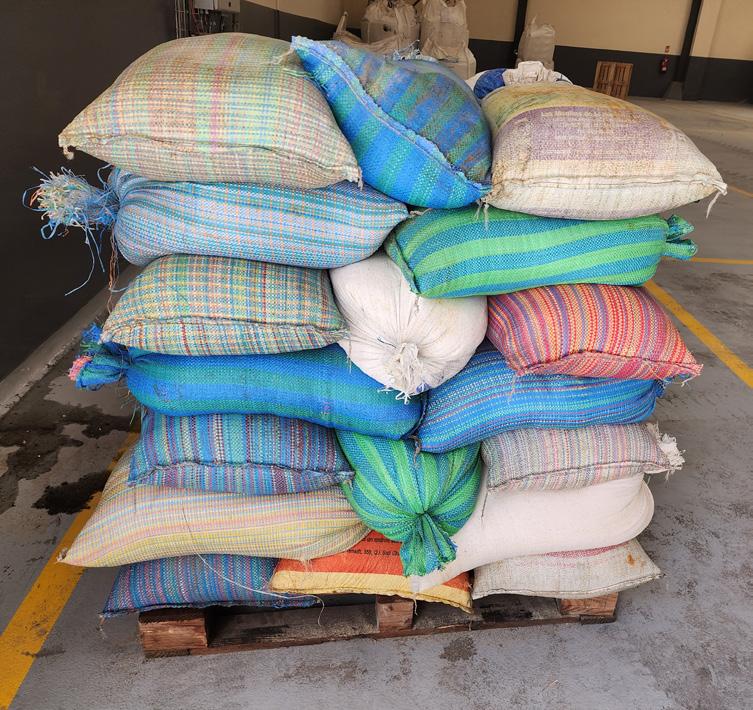
But those volumes will take a hit this year as consumer purchasing power and poultry production wane.
“The market has decreased, and it’s not a good period to start projects,” says Yassir Aruri, Eddik’s technical director.
Future unknown

Founded in 1978, the company operates six milling plants in a country that ranks inside the top 10 in U.S. soybean importers. Last year, Eddik Feed imported 80% of its total soybean meal purchases, 175,000 metric tons.
This year?
“We don’t know as so much depends on price and right now, prices are very high,” says Aruri.
Despite the current tough sledding, Badr of Skretting in Egypt remains optimistic the economy
will improve. And when it does, there will be a need for more fish and shrimp in the retail market.
“Better management, better feed quality and better consumer demand will help farmers squeeze out a profit, maybe yet this year,” Badr says. “And that bodes well for everyone.”
Shirbroun agrees.
“There are ample soybean supplies but a lack of access to U.S. dollars to make purchases,” she says.
“The raw materials are there; it’s how do we make the financial system work so the raw product can move?”
Contact Aaron Putze at aputze@iasoybeans.com.
THE SOY CHECKOFF: A MARKET BUILDER
Almost 15 years ago, the U.S. Soybean Export Council (USSEC), supported by checkoff investments of Iowa soybean farmers and constructed floating cage systems for tilapia production in developing countries. By 2017, the system evolved into an Inland Pond Raceway System (IPRS). The new way to produce fish more efficiently and sustainably was quick to catch on. A key piece of the IPRS is the need for increased quantities of soy-based feed. In 2019, Skretting team members participated in a USSEC Soy Excellence Center program to become more knowledgeable about IPRS, soy-based feed formulations and production techniques for shrimp. As a result, shrimp production is expanding along with Egypt’s need for U.S. soybean meal.
Bags of feed at Eddik Feed.
MEET THE DIRECTOR
Chuck White Spencer
Title: District 1 Director
ISA Committees: Supply, Public Affairs
What crops do you grow on the farm?
I raise soybeans and corn, and I farm with my brother Kevin and my son Patrick. We’ve been no-tilling soybeans for 21 years. We use strip-till and no-till to raise our corn crops. We also use cover crops.
What do you want farmers to know about the use of their checkoff dollars on the committees you serve?
The checkoff is a valuable investment for the improvement and yields of soybeans and marketing soybeans around the world.
What makes your farm unique?
We are a very sustainable farm with the use of cover crops, no-till soybeans and strip-till corn. Soil health is very important to us. How does your personal philosophy match the mission of Iowa Soybean Association (ISA)?

ISA has the exact philosophy I have: It’s about protecting and improving our most important natural resource, the soil.
What does success mean to you on the farm?
Increasing profitability by implementing practices and technology that achieve maximum profitability. That’s what everybody’s seeking. The bottom line is you have to be profitable.
What’s the latest innovation that gets you excited about the future of soybeans?
The high oleic oil that’s been developed using soybeans. High oleic oil has a lot of benefits for human health, renewable fuels and industrial uses.
How have you evolved as a soybean farmer?
The transition from tillage to no-till operation and the use of cover crops are the biggest changes that I’ve seen in my career, and it’s made me a much better producer.
How do you envision production agriculture 50 years from now?
I’d say the use of autonomous equipment will be commonplace. What’s the best piece of advice (industry-related or otherwise) you’ve ever been given?
Always look to new technology and innovative ways to improve your operation. Be willing to change.
What do you see as the biggest opportunity for homegrown soybeans?
The biggest opportunity is an opportunity to improve the quality of our soybeans and also yields. I know that yield will continue to improve with breeding techniques and technology.
14 | JUNE 2023 | IASOYBEANS.COM
If you live in district 1, 2, 4, 5, 7 or 9: You’re electing ONE ISA director in your crop district and TWO at-large directors. If you live in district 3, 6 or 8: You’re electing TWO at-large directors.
BALLOT(S):

Complete and enclose in the official ballot envelope. Do not enclose anything else in this envelope.
SOYBEAN PRODUCERS AFFIDAVIT:

Complete the affidavit on the outside of the official ballot envelope. This is required and qualifies you as a voter.
FARMER MEMBER FORM:
Complete to activate or confirm your membership. This allows us to better serve you throughout the year.
PLACE THE OFFICIAL BALLOT ENVELOPE AND FARMER MEMBER FORM IN THE ENCLOSED RETURN ENVELOPE.

To qualify, all ballots must be postmarked no later than JULY 31, 2023.
If you market at least 250 bushels of soybeans annually, and you don’t receive a ballot by mail by July 15, call the Iowa Soybean Association at 515-251-8640 to request a ballot.

WHY VOTE?
Soon, you’ll be receiving a ballot in your mailbox. This serves as an invitation to participate in electing the Iowa Soybean Association (ISA) board of directors. Your participation in this election determines the future of checkoff investments and priorities.
The board of directors determines how your checkoff gets invested. Whether it’s increasing market demand, agronomic and conservation research, or consumer outreach, your vote impacts the future of soybean farmer priorities.
QUESTIONS? CONTACT: BRE WAGNER, ISA PRODUCER SERVICES MANAGER 515-669-7963
bwagner@iasoybeans.com 6
4 5 3 WINNEBAGO WORTH MITCHELL KOSSUTH HANCOCK CERRO GORDO FLOYD HUMBOLDT WRIGHT FRANKLINBUTLER CLAYTON WINNESHIEK CHICKASAW ALLAMAKEE BREMER BLACK HAWK BUCHANAN DELAWARE DUBUQUE FAYETTE HOWARD BENTON LINN JONESJACKSON CLINTON SCOTT MUSCATINE CEDAR JOHNSON IOWA JEFFERSON WAPELLO MAHASKAKEOKUK WASHINGTON LOUISA DES MOINES HENRY LEE VAN BUREN DAVIS POLK WEBSTER HAMILTON HARDIN GRUNDY BOONE STORYMARSHALL TAMA DALLASJASPERPOWESHIEK MADISONWARREN MARION UNION CLARKE LUCASMONROE RINGGOLD DECATUR WAYNEAPPANOOSE TAYLOR PAGE FREMONT MILLS MONTGOMERY ADAMS ADAIR CASS POTTAWATTAMIE GUTHRIE AUDUBON SHELBY HARRISON MONONA CRAWFORD CARROLL GREENE WOODBURY IDA SAC CALHOUN POCAHONTAS BUENA VISTA CHEROKEE PLYMOUTH SIOUX O’BRIEN CLAY PALO ALTO EMMET DICKINSON OSCEOLA LYON
|
8 7
PAUL KASSEL
Paul Kassel grows soybeans and corn in Clay County. His soybean crop is planted no-till. Cereal rye has been grown as a cover crop on part of the soybean acres the last five years.
Kassel earned a Bachelor of Science in Agronomy and a Master of Science in Agronomy from Iowa State University. He is involved at Spencer Grace United Methodist Church and is a member of the Spencer Daybreakers Kiwanis. He retired from his agronomy position at Iowa State University Extension and Outreach.
WHY ARE YOU INTERESTED IN SERVING ON THE ISA BOARD?
The Iowa Soybean Assocaion (ISA) has addressed many relevant farm issues in Iowa. I would like to see this research and education continue. Some of these topics include the reduction of soil and nutrients from Iowa farm fields, agronomic research and pest management, the Iowa livestock industry, transportation and infrastructure, market discovery and market development.
WHAT’S THE BIGGEST ISSUE
FACING IOWA SOYBEAN FARMERS RIGHT NOW, AND HOW CAN THE BOARD ADDRESS IT?
One big issue is the need to continue research, education and market development to ensure that Iowa soybean production will continue to be profitable in the future.
Randy Kroksh grows soybeans, corn and alfalfa and raises cow/calf pairs, meat goats and laying hens in Plymouth County.
He earned his bachelor’s in agricultural education from South Dakota State University. He’s a member of the Iowa Farm Bureau, Iowa Cattleman’s Association, the Plymouth County Zoning Board and Akron-Westfield FFA alumni.
Kroksh taught agricultural education and FFA at Akron-Westfield for 18 years. There, he was named a finalist for the Golden Owl Award, a national award highlighting ag teachers who go above and beyond for their students.


In 2011, he was recognized with the Wergin Good Farm Neighbor Award,
presented from the Coalition to Support Iowa’s Farmers.
WHY ARE YOU INTERESTED IN SERVING ON THE ISA BOARD?
I’m interested in serving on the ISA board to learn all aspects of the soybean industry from generating marketing to promoting Iowa soybeans.




WHAT’S THE BIGGEST ISSUE FACING IOWA SOYBEAN FARMERS RIGHT NOW, AND HOW CAN THE BOARD ADDRESS IT?
I think the largest aspect facing Iowa soybean farmers are weed control measures and marketing. I believe the board can research aspects of these topics and work with growers to implement the measures.
16 | JUNE 2023 | IASOYBEANS.COM
6 8 7 4 5 3 HANCOC CERRO GORD FLOYD CHICKASAW BLACK HAWK BUCHANAN DELAWARE DUBUQU BENTON LINN JONESJ CKSO MUSCATINE CEDAR JEFFERSON WAPELL LOUIS DES MOINES HENRY LE VAN BUREN DAVIS WEBSTER HAMILTON HARDIN GRUNDY BOONE STORYMARSHALL UNION CLARKE LUCASMONROE RINGGOLD DECATUR WAYNEAPPANOOS TAYLOR PAGE FREMONT MILLS MONTGOMERY ADAMS SHELBY HARRISON MONONA CRAWFORD CARROL GREENE SIOUX O’BRIEN CLAY PALO ALTO
2023 DIRECTOR ELECTION
RANDY KROKSH AKRON DISTRICT
SPENCER
1
Marilee Jones grows soybeans and corn and raises cattle, poultry, goats and pigs. Marilee, her husband Greg and their sons also custom farm for area farmers.

Jones attended North Iowa Area Community College and Hawkeye Community College and studied accounting and business. She’s held several volunteer positions locally as a 4-H leader and on school committees at West Fork. She's a member of the Sheffield Philharmonic Club and a board member at Rockwell United Methodist Church. Marilee is currently on the Cerro Gordo Planning and Zoning Commission where she previously served as chairman and vice chair. She was involved in the Iowa Soybean Association (ISA) Experience Class and is currently involved in ISA’s Iowa-Missouri Policy Leaders Fellowship.
WHY ARE YOU INTERESTED IN SERVING ON THE ISA BOARD?
My experience with ISA opportunities has ignited an interest in serving. Even




with the busy times on the farm, I have the flexibility to commit to this role.
WHAT’S THE BIGGEST ISSUE FACING IOWA SOYBEAN FARMERS RIGHT NOW, AND HOW CAN THE BOARD ADDRESS IT?
Market volatility can impact an operation greatly. Being able to capitalize on new markets and exploring new growing practices will help farmers address their ROI when some things are out of our control. Knowing we have a unified voice and goal for the farmers is key; keeping the concerns of the farmers heard in legislative forums is pertinent. With current tensions in some countries, it is global chaos. Sometimes the smaller one-on-one contacts can help open another door for trade with so many doors being unpredictable at this time.
SAM SHOWALTER
Sam Showalter grows soybeans and corn and custom feeds hogs with his wife Laura, dad, brother and cousin. Showalter graduated from Iowa State University with a bachelor’s in agriculture. He is president of the Franklin County Soil and Water Commission and served on the Franklin County Fair Board. He has been involved with Iowa Soybean Association’s (ISA) Policy Leaders Fellowship, Experience Class and served as a voting delegate. He helped form the ISA/ Iowa Corn Growers association (ICGA) Collaborative District 2 Young Farmers Group. He is also an Iowa Farm Bureau member and volunteers with his church and coaches middle school wrestling.

WHY ARE YOU INTERESTED IN SERVING ON THE ISA BOARD?

My interest started in 2016 when I participated in the United Soybean Board’s “See for Yourself” program. The program opened my eyes to how checkoff dollars are spent to promote soybeans domestically and abroad. I like to surround myself with outsidethe-box thinking people, with a long-term vision in place. I have seen a lot of these characteristics within the ISA board and staff and would love to contribute to its successful track record in serving Iowa Soybean Farmers.
WHAT’S THE BIGGEST ISSUE FACING IOWA SOYBEAN FARMERS RIGHT NOW, AND HOW CAN THE BOARD ADDRESS IT?
Demand for our product. If there is no demand for our soybeans, there is no profitability for the farmer. We need to continue to find new customers abroad and show that we have a high quality, reliable and sustainably raised product.
IOWA SOYBEAN REVIEW® | 17
6 8 7 4 5 3 HANCOC CERRO GORD FLOYD CHICKASAW BLACK HAWK BUCHANAN DELAWARE DUBUQU BENTON LINN JONESJ CKSO MUSCATINE CEDAR JEFFERSON WAPELL LOUIS DES MOINES HENRY LE VAN BUREN DAVIS WEBSTER HAMILTON HARDIN GRUNDY BOONE STORYMARSHALL UNION CLARKE LUCASMONROE RINGGOLD DECATUR WAYNEAPPANOOS TAYLOR PAGE FREMONT MILLS MONTGOMERY ADAMS SHELBY HARRISON MONONA CRAWFORD CARROL GREENE SIOUX O’BRIEN CLAY PALO ALTO
2023 DIRECTOR ELECTION
HAMPTON
MARILEE
DISTRICT 2
JONES SHEFFIELD
JEFF FRANK
Jeff Frank grows soybeans and corn with his wife Ellen and son in Sac County. He also custom farms. Upon graduating from Lake ViewAuburn, Frank immediately began farming. Since that time, he has continued to learn from the trials and errors of 45 growing seasons. Frank has served on the Iowa Soybean Association (ISA) board of directors and various committees. He is also on the Landus Cooperative board of directors. He is a previous Iowa Farm Bureau and USDA Farm Service Agency board member.
WHY ARE YOU INTERESTED IN SERVING ON THE ISA BOARD?
I would like to continue my role as a director to help advance the soybean industry and all the possibilities that might help Iowa farmers be more profitable and sustainable.
WHAT’S THE BIGGEST ISSUE FACING IOWA SOYBEAN FARMERS RIGHT NOW, AND HOW CAN THE BOARD ADDRESS IT?
Several issues come to mind: the farm bill, renewable diesel and sustainable aircraft fuel. Our public affairs committee is continually involved in lobbying our legislators in Des Moines and in Washington, D.C., to have farmers’ voices heard. On the fuel side, we are addressing issues and answering questions and concerns the industry has on these new and exciting possibilities for soybean farmers.
James Hepp is a first-generation farmer in Calhoun County, growing soybeans and corn. Heavily involved in cover crops, no-till and strip till in his operation, Hepp also grows rye for cover crop seed.


Hepp earned his degree in ag business from Northwest Missouri State University. He is a licensed crop insurance agent and farms with his wife Paige and young son Karsten. He is the president of the Calhoun County Farm Bureau, a member of the Rockwell City Fire Department, and is on the board for the Calhoun County Corn Growers. He has been involved with the Iowa Soybean Association’s (ISA) Experience Class, Communications Squad and District Advisory Committee.
WHY ARE YOU INTERESTED IN SERVING ON THE ISA BOARD?
Since becoming involved in ISA, I have loved it. I want to be more




active and take on leadership roles in the organization to help benefit all farmers and rural Iowans. My farming and crop insurance experience, combined with being a young, firstgeneration farmer, will bring a lot to the table.
WHAT’S THE BIGGEST ISSUE FACING IOWA SOYBEAN FARMERS RIGHT NOW, AND HOW CAN THE BOARD ADDRESS IT?
There is an opportunity to build markets for soybean farmers and create better basis. Herbicide-resistant weeds and input costs are also areas of concern. The ISA board can address these by creating conversations and research opportunities to benefit farmers.
18 | JUNE 2023 | IASOYBEANS.COM
6 8 7 4 5 3 HANCOC CERRO GORD FLOYD CHICKASAW BLACK HAWK BUCHANAN DELAWARE DUBUQU BENTON LINN JONESJ CKSO MUSCATINE CEDAR JEFFERSON WAPELL LOUIS DES MOINES HENRY LE VAN BUREN DAVIS WEBSTER HAMILTON HARDIN GRUNDY BOONE STORYMARSHALL UNION CLARKE LUCASMONROE RINGGOLD DECATUR WAYNEAPPANOOS TAYLOR PAGE FREMONT MILLS MONTGOMERY ADAMS SHELBY HARRISON MONONA CRAWFORD CARROL GREENE SIOUX O’BRIEN CLAY PALO ALTO 2023
JAMES HEPP ROCKWELL CITY
DIRECTOR ELECTION
DISTRICT 4
INCUMBENT
LAKE VIEW
LaVerne Arndt raises cow/calf pairs and grows soybeans and corn with his son in Sac County.

Arndt earned a Bachelor of Science in Education from Northwest Missouri State. He is active on his church board, serves as a township trustee and is on the local fire board. For the last nine years, he was on the Calhoun County Electric Cooperative Association board.
WHY ARE YOU INTERESTED IN SERVING ON THE ISA BOARD?
I served on the ISA board for one term, and I would like the opportunity to serve again. I enjoy talking to anyone interested in soybean production or marketing. I will be able to help direct the board on the important topics that affect the soybean industry. This is done by first listening to the farmers I represent and then taking those concerns to the board. After a decision, I think it’s important to communicate back to the producers.
WHAT’S THE BIGGEST ISSUE FACING IOWA SOYBEAN FARMERS RIGHT NOW, AND HOW CAN THE BOARD ADDRESS IT?
There are many important issues, including the Waters of the U.S., maintaining international soybean sales and encouraging farmers to implement conservation efforts. The Waters of the U.S. issue is very important to farmers, and we need to convince the Environmental Protection Agency it made the wrong decision. Any country that is growing soybeans also wants to sell their soybeans. The ISA board needs to make sure it keeps soybean buyers happy so they continue to purchase from the U.S.
WHY ARE YOU INTERESTED IN SERVING ON THE ISA BOARD?




Sharon Chism, Iowa State, Ag Business, grows corn and soybeans in Story County. She is also an ag consultant with an emphasis on improving profitability on fragile areas of fields through soil health and field efficiency practices.

Sharon has been involved with the Iowa Soybean Association (ISA) District Advisory Council and helped ISA at the state fair. She has been involved with research projects on planting date, plant population and seed depth. Chism is involved with Iowa Agriwomen, focusing on ag education and ag economics. She serves on the Iowa Women in Ag planning committee and volunteers at her local church and youth organizations.
ISA receives from farmers onequarter of 1% of the net market value of soybeans sold by farmers. I want to be an advocate for farmers and help ISA staff continue to efficiently provide useful research to farmers and soybean market price promotion. I have been impressed with ISA’s education for caretakers of the land regarding soil health and water quality improvements. I have seen ISA’s direct benefit to farmers through plant population research and efforts to grow aquaculture. My listening, communication and leadership skills make me a good candidate for the ISA board of directors at-large position.
WHAT IS THE BIGGEST ISSUE FACING FARMERS RIGHT NOW, AND HOW CAN THE BOARD ADDRESS IT?
Growing market demand is key to producer’s well-being through the cycles of world grain prices. ISA can continue to help farmers navigate the uncertainty of weather and grain markets.
IOWA SOYBEAN REVIEW® | 19
6 8 7 4 5 3 HANCOC CERRO GORD FLOYD CHICKASAW BLACK HAWK BUCHANAN DELAWARE DUBUQU BENTON LINN JONESJ CKSO MUSCATINE CEDAR JEFFERSON WAPELL LOUIS DES MOINES HENRY LE VAN BUREN DAVIS WEBSTER HAMILTON HARDIN GRUNDY BOONE STORYMARSHALL UNION CLARKE LUCASMONROE RINGGOLD DECATUR WAYNEAPPANOOS TAYLOR PAGE FREMONT MILLS MONTGOMERY ADAMS SHELBY HARRISON MONONA CRAWFORD CARROL GREENE SIOUX O’BRIEN CLAY PALO ALTO 2023 DIRECTOR ELECTION HUXLEY
LAVERNE ARNDT SAC CITY
SHARON CHISM
AT LARGE (VOTE FOR ONE)
COREY GOODHUE
Corey Goodhue grows soybeans, corn, green freezer-pack peas, potatoes, rye, trees and wine grapes on his family’s farm near Carlisle.
A fourth-generation farmer, Goodhue earned his Bachelor of Science in Industrial Technology from Iowa State University. He’s served as the secretary of the Agriland FS board of directors and as the vice president of its foundation committee. He also serves on the board of directors for Growmark.


WHY ARE YOU INTERESTED IN SERVING ON THE ISA BOARD?
I am excited about the opportunity to represent my neighbors and soybean
growers in Iowa. ISA has amazing opportunities to expand our markets by growing relationships and conducting research to improve our environmental footprint and increase our yields. I am excited about ISA’s work and would like to contribute in any way I can.




WHAT’S THE BIGGEST ISSUE FACING IOWA SOYBEAN FARMERS RIGHT NOW, AND HOW CAN THE BOARD ADDRESS IT?
Narrowing it down to one issue is very difficult. I see the challenges we face with global trade that are very difficult to address as an individual. ISA’s board can have a much greater impact for all growers in expanding trade relationships.
Patrick Murken is a fifth-generation farmer near Story City. He grows soybeans, corn and cover crops. He also has some land in the Conservation Reserve Program. His goal: To produce the highest-yielding crops possible using resources that also allow him to receive the highest net income from that same crop.
Murken earned a technical degree from Des Moines Area Community College, a Bachelor of Science from the University of Northern Iowa and master’s from the University of Phoenix. He also completed additional master’s course work at Iowa State University.
He spent 45 years working two careers — one at John Deere and the second farming. Murken is involved in his church, local USDA office and Iowa Soybean Association’s (ISA) Communications Squad. He was a U.S. Peace Corps Volunteer in the Philippines, where he taught sugar
cane farmers how to grow soybeans as an alternate crop.
WHY ARE YOU INTERESTED IN SERVING ON THE ISA BOARD?
I believe I can make a positive difference regarding the public’s view of agriculture and genetic modification of both crops and seeds. I also believe soybeans can help feed the world, and I think soybeans are a great source of protein.
WHAT’S THE BIGGEST ISSUE FACING IOWA SOYBEAN FARMERS RIGHT NOW, AND HOW CAN THE BOARD ADDRESS IT?
U.S. farmers face significant process and technology changes to produce soybeans at a competitive price point, which allows our soybeans to be desirable in the world market.
20 | JUNE 2023 | IASOYBEANS.COM
6 8 7 4 5 3 HANCOC CERRO GORD FLOYD CHICKASAW BLACK HAWK BUCHANAN DELAWARE DUBUQU BENTON LINN JONESJ CKSO MUSCATINE CEDAR JEFFERSON WAPELL LOUIS DES MOINES HENRY LE VAN BUREN DAVIS WEBSTER HAMILTON HARDIN GRUNDY BOONE STORYMARSHALL UNION CLARKE LUCASMONROE RINGGOLD DECATUR WAYNEAPPANOOS TAYLOR PAGE FREMONT MILLS MONTGOMERY ADAMS SHELBY HARRISON MONONA CRAWFORD CARROL GREENE SIOUX O’BRIEN CLAY PALO ALTO 2023 DIRECTOR ELECTION DISTRICT 5
CARLISLE STORY CITY PATRICK MURKEN
Scott Neff raises soybeans, corn and seed corn with his wife Mary Beth and his brother and sister-in-law in Marshall and Grundy counties. They have been exclusively no-till and strip till farmers since 1992. Cover crops are incorporated on all of their acres. Neff graduated from Iowa State University with a degree in agricultural business. He’s served in leadership positions on the local school board, Rotary club, county Farm Bureau, his church, chamber of commerce and United Way. The family received the Iowa Farm Environmental Leader Award in 2020. Scott and Mary Beth are in the process of handing the dayto-day operations over to their three sons.
WHY ARE YOU INTERESTED IN SERVING ON THE ISA BOARD?


I have always believed in giving back. After an almost 40-year
career as an agricultural banker, the perspectives I have gained from a diverse group of top agricultural producers puts me in a unique position to contribute to the organization. I also have the benefit of being an active farmer for the last 30 years.

WHAT’S THE BIGGEST ISSUE FACING IOWA SOYBEAN FARMERS RIGHT NOW, AND HOW CAN THE BOARD ADDRESS IT?
The most important issue for soybean farmers today is to be an active participant in decisions that have a long-term impact on our operations. Regulations centered around climate change, herbicide use, conservation practices, genetic engineering and trade are all on the list. These issues can be addressed by being well-informed on these issues and assertive about producers' views on these topics with various decision-makers.

cooperative soybean processor
DISTRICT 5 SCOTT
your
www.agp.com
NEFF BEAMAN
SCOT BAILEY ANITA
INCUMBENT


DISTRICT 7
Scot Bailey grows soybeans, corn and hay in Cass County. He also raises cows and sheep in a family corporation owned by him and his wife Cheryl, his parents, two sisters and aunt. They have farmed no-till for 30 years and strip-till for nine years. They also use variable rate for planting and fertilizer on all of their acres. The family continues to research economically sustainable ways to incorporate cover crops into their acres.


Bailey earned a Bachelor of Science in Ag Studies from Northwest Missouri State University. He has served as a director on the Iowa Soybean Association’s (ISA) board and serves as ISA’s representative on the Soy Transportation Coalition
board. He is a past president of the Cass County Cattlemen’s Association and director of Cass County’s ag and education committee.
WHY ARE YOU INTERESTED IN SERVING ON THE ISA BOARD?
I want to continue serving on ISA’s board to further learn about where our checkoff dollars go and make sure they are spent wisely. I also want to improve the public perception of agriculture and how crops are grown while dispelling the myths of GMOs. I want to continue promoting soybeans and improve the protein content for consumers around the world.
WHAT’S THE BIGGEST ISSUE FACING IOWA SOYBEAN FARMERS RIGHT NOW, AND HOW CAN THE BOARD ADDRESS IT?
With its ability to work in many areas from production to policy, ISA helps farmers make more money, improve the environment and educate the public on agricultural practices.
Mark and his wife Michelle live north of Villisca where they grow soybeans and corn with their sons in Montgomery and Page counties. Mark started renting ground as a senior in high school and has farmed full time ever since.
He’s an advisory board member for Bank Iowa’s Clarinda region. He is also a past board member of the United Farmers Coop, and serves on local fire and EMS departments in Montgomery county, and on the county 911 board. He’s also been involved in community boards and county organizations.
WHY ARE YOU INTERESTED IN SERVING ON THE ISA BOARD?
I’m interested in serving on the ISA board to help be a spokesman to help promote the various uses


of Iowa grown soybeans, not just in our state but all across the U.S. There is a great future for the expansion of our soybean products to the world.
WHAT’S THE BIGGEST ISSUE FACING IOWA SOYBEAN FARMERS RIGHT NOW, AND HOW CAN THE BOARD ADDRESS IT? We sometimes have to get away from all the politics that are limiting the way we can promote our products and look for new avenues to proceed to getting this done. There is a growing world out there that wants our products, and we need to be ready to deliver, when they are ready.
22 | JUNE 2023 | IASOYBEANS.COM
MARK
VILLISCA
FOCHT
6 8 7 4 5 3 HANCOC CERRO GORD FLOYD CHICKASAW BLACK HAWK BUCHANAN DELAWARE DUBUQU BENTON LINN JONESJ CKSO MUSCATINE CEDAR JEFFERSON WAPELL LOUIS DES MOINES HENRY LE VAN BUREN DAVIS WEBSTER HAMILTON HARDIN GRUNDY BOONE STORYMARSHALL UNION CLARKE LUCASMONROE RINGGOLD DECATUR WAYNEAPPANOOS TAYLOR PAGE FREMONT MILLS MONTGOMERY ADAMS SHELBY HARRISON MONONA CRAWFORD CARROL GREENE SIOUX O’BRIEN CLAY PALO ALTO 2023 DIRECTOR ELECTION
DISTRICT 9

Tom Adam grows soybeans, corn, wheat and hay on his farm near Harper. He earned his bachelor’s in finance from the University of Iowa. For the past six years, Adam has served as an Iowa Soybean Association (ISA) director, serving on the executive, supply, and information and education committees in various roles. He currently serves as secretary of the Soy Aquaculture Alliance and is involved locally as a township trustee and a Holy Trinity Cemeteries board member.
WHY ARE YOU INTERESTED IN SERVING ON THE ISA BOARD?
ISA is a diverse organization, focusing on all aspects of soybean production from demand growth and production research to transportation, conservation and government policy. My education and experience have prepared me to contribute in a positive way to accomplish the goals of the organization; it is an honor to represent Iowa soybean farmers.
WHAT’S THE BIGGEST ISSUE FACING IOWA SOYBEAN FARMERS RIGHT NOW, AND HOW CAN THE BOARD ADDRESS IT?
Strong export demand from China, robust domestic feed demand and a growing biofuels industry have all contributed greatly to the recent spike in profitability of soybean farmers. We must continue to diversify foreign sales throughout the world, particularly in developing and emerging markets where incomes are beginning to rise and diets are hugely protein deficient. As we expand demand for soybean oil through biofuels, we need to continue to research new diverse uses for the product. And we must continue to support the domestic livestock industry whenever possible.
TOM ADAM
OAKVILLE JEFF HEDGES
Jeff Hedges grows soybeans and corn in Des Moines County. He earned his ag business degree from Iowa State University and operates his own seed and agronomy sales business.


Hedges worked as a district and regional seed manager for 30 years before recently deciding to commit more time to the farm and his own seed business. He is involved in his local township as a trustee and serves on the Mediapolis FFA alumni committee.
WHY ARE YOU INTERESTED IN SERVING ON THE ISA BOARD?
I’m interested in serving on the Iowa Soybean Assocaion




(ISA) board because of my passion for agriculture and the opportunity to give back to a great organization. I want to help ISA be a vital organization that serves farmers and the next generation of farmers. My background in production ag and agronomy, coupled with my leadership experience in ag sales management, will provide valuable insights in this role.
WHAT’S THE BIGGEST ISSUE FACING IOWA SOYBEAN FARMERS RIGHT NOW, AND HOW CAN THE BOARD ADDRESS IT?
One of the biggest issues facing soybean farmers is maintaining global soybean demand to market our products. The board must continue building markets domestically and internationally to strengthen soybean sales.
IOWA SOYBEAN REVIEW® | 23
6 8 7 4 5 3 HANCOC CERRO GORD FLOYD CHICKASAW BLACK HAWK BUCHANAN DELAWARE DUBUQU BENTON LINN JONESJ CKSO MUSCATINE CEDAR JEFFERSON WAPELL LOUIS DES MOINES HENRY LE VAN BUREN DAVIS WEBSTER HAMILTON HARDIN GRUNDY BOONE STORYMARSHALL UNION CLARKE LUCASMONROE RINGGOLD DECATUR WAYNEAPPANOOS TAYLOR PAGE FREMONT MILLS MONTGOMERY ADAMS SHELBY HARRISON MONONA CRAWFORD CARROL GREENE SIOUX O’BRIEN CLAY PALO ALTO 2023 DIRECTOR ELECTION
HARPER INCUMBENT
AIMEE BISSELL
Aimee Bissell operates a soybean and corn farm with her husband and two sons in southwest Iowa.
Bissell serves on the Iowa Soybean Association’s (ISA) Research Center for Farming Innovation (RCFI) advisory committee. She has also participated in ISA’s District Advisory Council, Experience Class and Communications Squad. She was a member of ISA’s Policy Leaders Fellowship and served as a voting delegate at ISA’s Winter Soy Summit. Bissell serves as treasurer for the Adams-Taylor County Corn Board and participates on its research committee. She has volunteered with Iowa CommonGround for the past five years.
A former registered respiratory therapist at Montgomery County




Memorial Hospital, Bissell now volunteers on various boards and farms with her family.
WHY ARE YOU INTERESTED IN SERVING ON THE ISA BOARD?
We have been blessed with an opportunity to assist in feeding the world’s population. ISA does a phenomenal job of supporting farmers, and I would be honored to serve as a voice for my fellow soybean farmers in Iowa.
WHAT’S THE BIGGEST ISSUE FACING IOWA SOYBEAN FARMERS RIGHT NOW, AND HOW CAN THE BOARD ADDRESS IT?
The farm bill is the most impactful piece of legislation related to agriculture. We need to protect provisions in the farm bill to ensure we can continue to provide a safe and abundant food supply. Farmers deserve certainty in programs, such as crop insurance, disaster programs and voluntary conservation. Thanks to the dedication of board members, ISA is a trusted voice when tough discussions are taking place in Washington, D.C.
Rex Lawler and his wife Marilee grow soybeans and corn on 1,493 acres in Hardin County using no-till and minimum tillage practices. Additional acres are also enrolled in the Conservation Reserve Program.
A graduate of Iowa State University, Lawler has been active in his community as a Hardin Soil and Water Conservation District Commissioner and in various roles with the Honey Creek New Providence Church, Providence Township, New Providence Cemetery, Eldora Public Library Board and New Providence Community Club.
WHY ARE YOU INTERESTED IN SERVING ON THE ISA BOARD?
Having been a full-time farmer for 45 years, I bring a wealth of experience to the board. I am fascinated by all the newer uses for soybeans, like aviation fuel. I would enjoy helping educate the people in other countries on the many uses of soybeans and increasing the exports of soybeans. It is important to keep


increasing the demand and price of soybeans. Nearing retirement, I have more time to devote to Iowa Soybean Assocaion (ISA).
WHAT’S THE BIGGEST ISSUE FACING IOWA SOYBEAN FARMERS RIGHT NOW, AND HOW CAN THE BOARD ADDRESS IT?
Educating the nonagricultural sector. With the smaller number of farmers, existing farmers must promote their products. I learned how important ISA is by being a member of the 2022 ISA Experience class. ISA members must be proactive in working with Iowa legislators to get bills passed that help agriculture. More educational programs on soybeans and their many uses would be beneficial in urban schools and adult service organizations.
24 | JUNE 2023 | IASOYBEANS.COM
6 8 7 4 5 3 HANCOC CERRO GORD FLOYD CHICKASAW BLACK HAWK BUCHANAN DELAWARE DUBUQU BENTON LINN JONESJ CKSO MUSCATINE CEDAR JEFFERSON WAPELL LOUIS DES MOINES HENRY LE VAN BUREN DAVIS WEBSTER HAMILTON HARDIN GRUNDY BOONE STORYMARSHALL UNION CLARKE LUCASMONROE RINGGOLD DECATUR WAYNEAPPANOOS TAYLOR PAGE FREMONT MILLS MONTGOMERY ADAMS SHELBY HARRISON MONONA CRAWFORD CARROL GREENE SIOUX O’BRIEN CLAY PALO ALTO
2023 DIRECTOR ELECTION
BEDFORD REX LAWLER NEW PROVIDENCE AT LARGE (VOTE
FOR ONE)



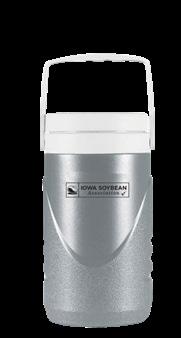



IOWA SOYBEAN REVIEW® | 25 Funded by the soybean checkoff ENTER TO WIN: iasoybeans.com/membership with code FLY1 BE ENTERED TO WIN Take your soybean acres to new heights with an ISA Farmer Membership a drone or one of 75 other prizes! ACTIVATE OR CONFIRM your no-cost farmer membership today and S Y CAN TAKE YOU THERE 1 of 25 Carhartt shirts 1 of 50 swag boxes 1 DJI Mini 3 Drone
Dobson works to add value, diversity and conservation to his farm.
 BY KRISS NELSON
BY KRISS NELSON
analyze
26 | JUNE 2023 | IASOYBEANS.COM
Mark and his son Oliver
their rye in Donnellson.
Innovator and environmentalist are just a few words describing how Mark Dobson, owner of reMARKable Farms LLC, approaches farming.
Dobson, an Iowa Soybean Association (ISA) farmer-member from Donnellson, describes his farm as a very multifaceted farming operation.
He has certified organic and conventional acres and raises soybeans, corn, wheat, hay and cover crops.
Not a stranger to growing cover crops, Dobson raises his cereal rye seed but uses the ground cover for soil building and weed control.
“I have been using cover crops before they were cool,” he says, adding that this will be his 17th year planting cereal rye.
Rooted in conservation
Dobson is no stranger to conservation practices. His family started no-till in the 1980s and transitioned into strip-till in the early 2000s. He has embraced his
conservationist roots and carries those traditions on his acres.
Dobson has collaborated with ISA on various trials revolving around soil fertility and conservation management.
“Through trials, Mark has shown us the value of strip-till,” says Scott Nelson, ISA research agronomist. “He is a leader in the future of production.”
Though Dobson tries to avoid disturbing the soil, there are times tillage is needed to help manage his organic acres.
For example, to help combat a widespread breakout of foxtail in his organic acres, Dobson plowed. Within four hours, he had leveled and seeded cereal rye.
Dobson says managing his organic acres is a bit different than managing his conventional acres. While conventional farming typically uses chemical fertilizers to promote plant growth, organic farming relies more on manure and compost to fertilize the soil.

“I may do things that aren’t considered conservation-minded on my organic acres, but my soil is never naked for six months a year,” he says. “If I were completely conventional, there would always be something growing on my fields.”
Manure is Dobson’s nutrient source on his organic acres. Cereal rye is planted after the manure is applied to keep the nitrogen from departing the field.
Dobson also does his own tiling and terrace construction.
“Cover crops only take you so far in protecting soil loss,” he says. “Surface and subsurface drainage are also important pieces of the puzzle.”
Innovating for change
Dobson is fearless in trying new things on his farm, including adapting machinery.
To help with weed control, he uses a weed zapper and hopes to rely on heavier stands of cereal rye — up to
Continued on Page 28
nearly 5 bushels to the acre, to take advantage of the biomass.
To achieve this goal, he is building a precision drill. Using John Deere Max Emerge 5 twin-row units on two ranks, his homemade drill will be a 24-row unit on 8-inch centers.
Dobson plans to raise the organic cereal rye seed he will plant ahead of his organic soybeans.
“I am planning to no-till my soybeans into that rye with the same precision drill, roll the rye once and get

by with running the weed zapper twice and not disturb the ground,” he says.
Dobson has purchased a detasseling machine. He is mounting a seeder onto the machine to seed cereal rye into standing corn.
He realizes passersby may point and laugh, but that does not bother him. Being innovative with machinery helps Dobson prepare for what he believes is inevitable.
“For conservation, I think we will soon have mandates, and that is fine,”
he says. “Why not figure it out now, so when it comes to that you are ready?”
Creating value
Having a layer of biomass from cover crops can be ammunition in the war on weed control.
Dobson will use a pre-plant application of 2, 4-D and a residual on his commercial acres to help battle broadleaves. He then plants the soybeans into standing rye and waits until his soybeans have grown 10-15 inches and have achieved a good

“ We need to get away from easy button agriculture. Let’s show we don’t just grow soybeans, but we grow the best soybeans importers can buy.”
28 | JUNE 2023 | IASOYBEANS.COM
Mark Dobson
stand of rye before terminating the cover crop.
“That is our year. There are no additional herbicide costs,” he says. “Those are savings of $10 to $20 an acre. It is real money that can go a long way.”
Adding diversity to the farm with hay acres, the certified organic acres have brought additional value to his farm.
“I have off-farm jobs, and I am working on getting to where I just farm,” he says.
Sustainable production
“Who are you farming for? Are you farming for the next generation?” These are questions more farmers should consider when making
management decisions, Dobson says.
Besides protecting the land for future generations, U.S. soybean exports depend on sustainability practices, such as cover crops, reduced tillage and diversification.
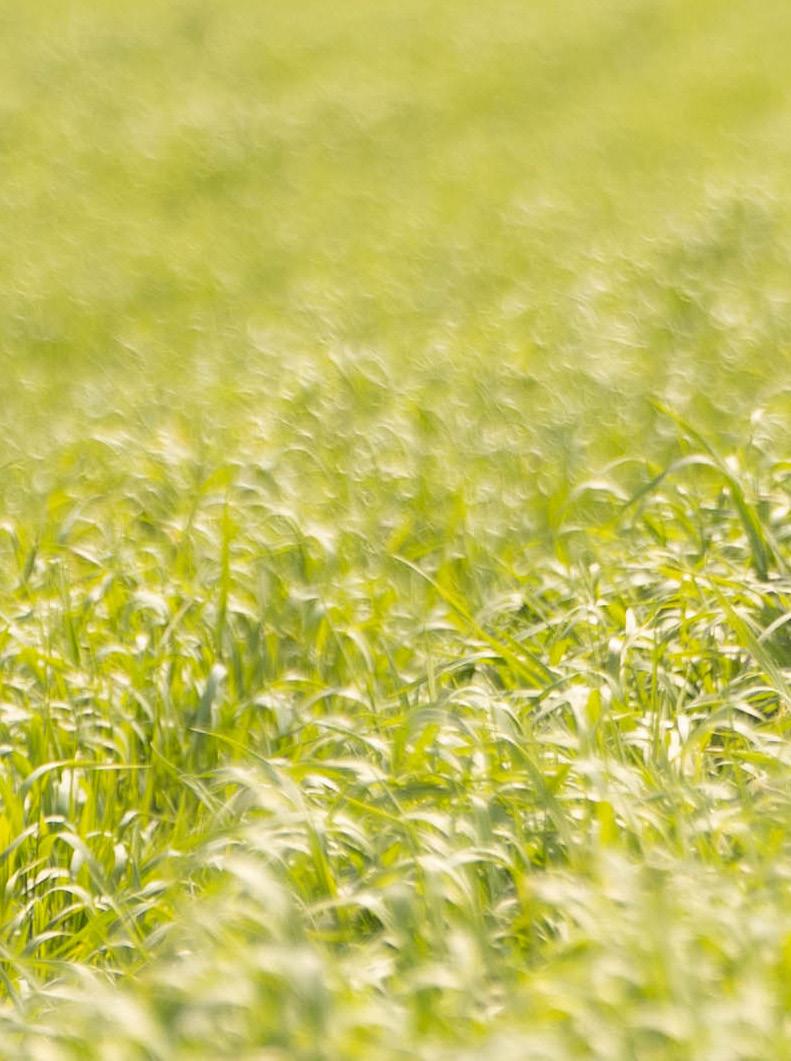
“We need to get away from easy button agriculture,” he says. “Let’s show we don’t just grow soybeans, but we grow the best soybeans importers can buy.”
Dobson farms sustainably by using real-time kinematic (RTK) to apply nitrogen, and he is currently involved in an Iowa Nitrogen Initiative nitrogen rate trial.


Dobson has replicated blocks of high, medium, low and zero-applied nitrogen rates in his fields. Soil and ear testing will be conducted to help
better understand the soil’s nitrogen availability throughout the season.
“Mark is working to help find solutions for problems that fit his area and his operation,” says Nelson. “It is important we understand nitrogen management in his area of southeast Iowa and throughout Iowa.”
These on-farm trials help understand optimum nitrogen rates across variability in weather, soils, genetics and management.
“I’m excited to see the results as I have found traditional nitrogen recommendations are high when planting directly on top of nitrogen applications via RTK,” Dobson says.
 Contact Kriss Nelson at knelson@iasoybeans.com
Contact Kriss Nelson at knelson@iasoybeans.com
IOWA SOYBEAN REVIEW® | 29
Oliver is 8 years old and farms with his dad in every free moment.


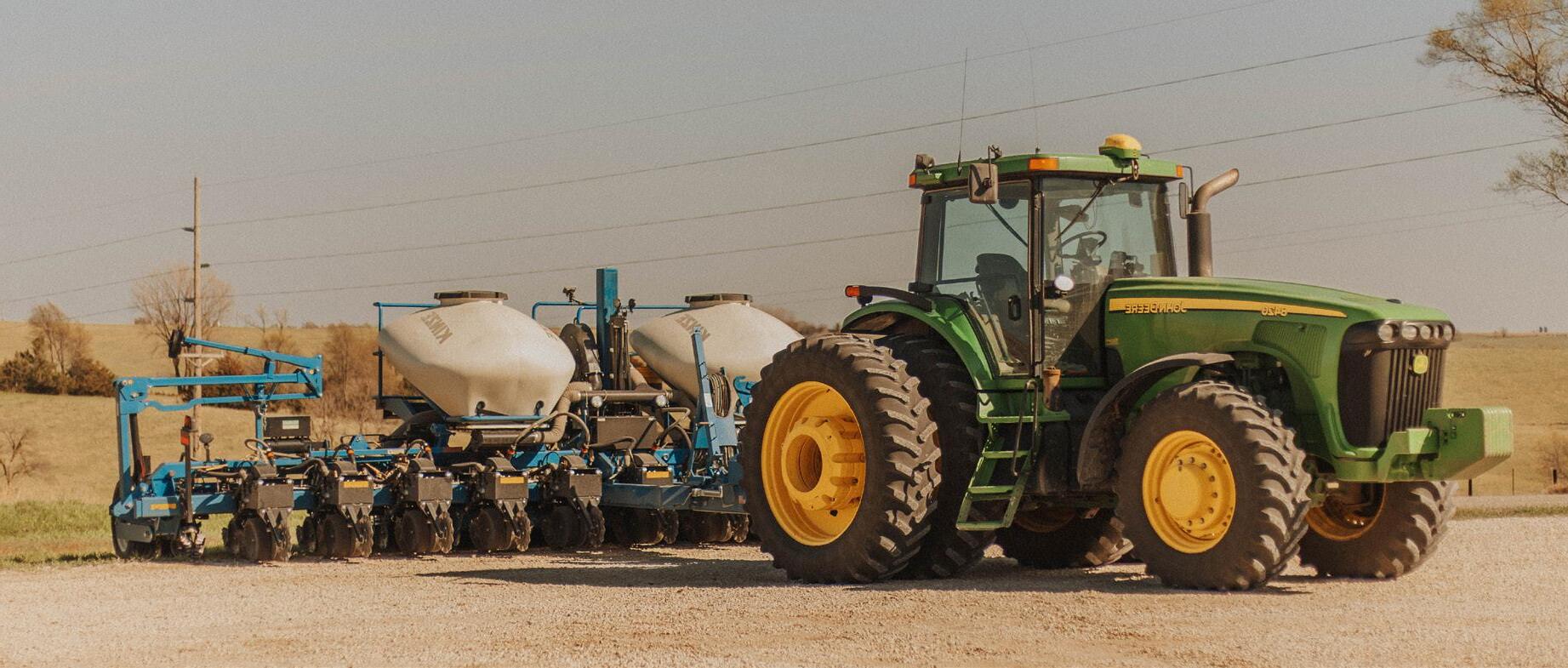

 An excited pony runs toward the camera near Donnellson.
A John Deere tractor keeps a steady pace whiile planting soybeans near Linn Grove.
A farm cat explores in a western Iowa farm shop.
A planter and tractor sit ready in rural Villisca.
An excited pony runs toward the camera near Donnellson.
A John Deere tractor keeps a steady pace whiile planting soybeans near Linn Grove.
A farm cat explores in a western Iowa farm shop.
A planter and tractor sit ready in rural Villisca.
A newborn calf rests quietly next to its mother in Cumming.


Once used on the farm, a tractor sits as a field ornament near Donnellson.

 Colorful tulips bloom at Reiman Gardens in Ames.
Colorful tulips bloom at Reiman Gardens in Ames.
You’re where the rubber meets the road. And the engine. And the interior.









All soybean farmers, including you, are busy replacing petroleum with your soy oil. How? By pooling your resources through your soy checkoff. Learn how your soy checkoff is bringing tangible returns back to you and your operation at unitedsoybean.org/hopper

Moving Soy Forward. Moving You Forward. ©2021 United Soybean Board [61133-1 7/21] IA
( YOU )































 Baratta bbaratta@iasoybeans.com
Baratta bbaratta@iasoybeans.com






 Trade. Development. Food Security.
Trade. Development. Food Security.












 Top left: Poultry feed samples from Eddik Feed in Morocco.
Top right: Processed soybeans for fish feed at Skretting Feed.
Right: Randy Miller (on right) chats with Eddik Feed Technical Director Yassir Aruri during a walking tour of the facility located on the outskirts of Berrechid, Morocco.
Bottom right: Suzanne Shirbroun shares a toy tractor while visiting Skretting Feed.
Top left: Poultry feed samples from Eddik Feed in Morocco.
Top right: Processed soybeans for fish feed at Skretting Feed.
Right: Randy Miller (on right) chats with Eddik Feed Technical Director Yassir Aruri during a walking tour of the facility located on the outskirts of Berrechid, Morocco.
Bottom right: Suzanne Shirbroun shares a toy tractor while visiting Skretting Feed.





















































 BY KRISS NELSON
BY KRISS NELSON






 Contact Kriss Nelson at knelson@iasoybeans.com
Contact Kriss Nelson at knelson@iasoybeans.com




 An excited pony runs toward the camera near Donnellson.
A John Deere tractor keeps a steady pace whiile planting soybeans near Linn Grove.
A farm cat explores in a western Iowa farm shop.
A planter and tractor sit ready in rural Villisca.
An excited pony runs toward the camera near Donnellson.
A John Deere tractor keeps a steady pace whiile planting soybeans near Linn Grove.
A farm cat explores in a western Iowa farm shop.
A planter and tractor sit ready in rural Villisca.


 Colorful tulips bloom at Reiman Gardens in Ames.
Colorful tulips bloom at Reiman Gardens in Ames.























